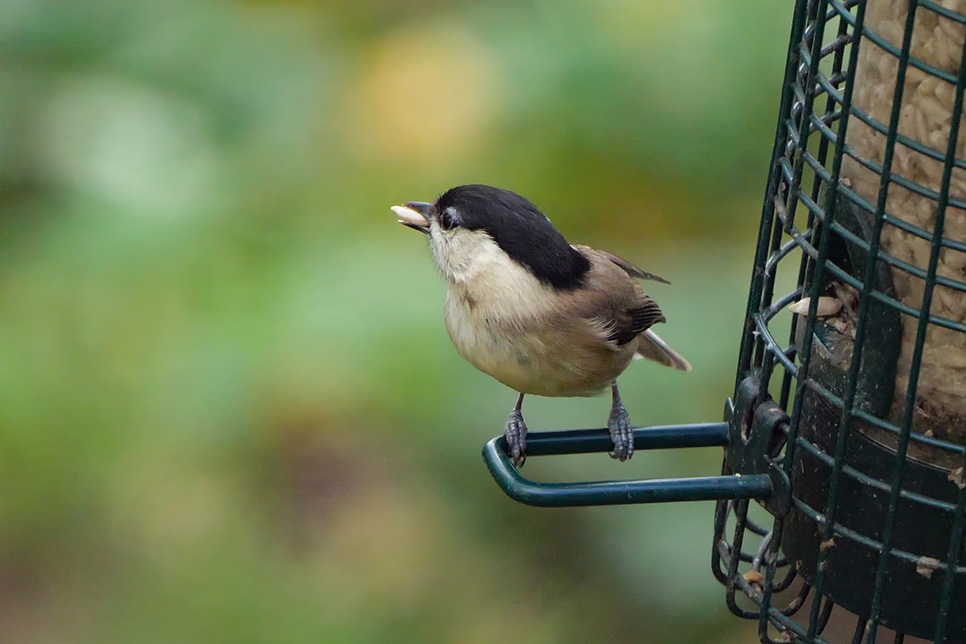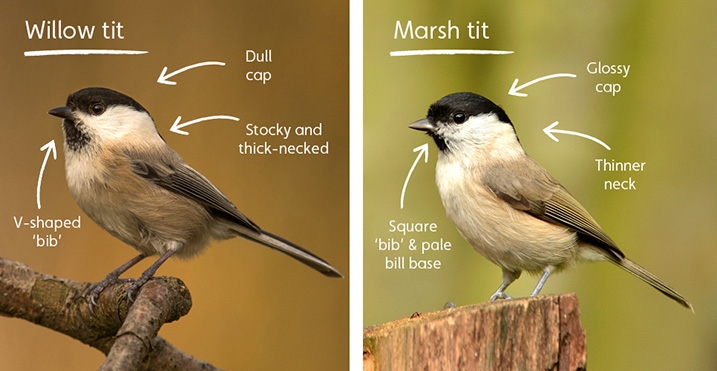Willow tit citizen science project needs YOUR help

Washington Wetland Centre is asking the public to be its ‘eyes and ears’ as it works to help protect the red-listed willow tit...
Citizen scientists are needed to help WWT Washington save the UK’s fastest declining resident bird species.
Our team is calling on the public to assist in the monitoring of the red-listed willow tit, as part of an ongoing species recovery research project.
Numbers of these small passerines fell by 83% between 1995 and 2017*, so in a bid to help tackle the decline, we're urging would-be conservationists across the North East to get actively involved by reporting sightings of the elusive birds to us, as well as attending public ringing sessions.
All data gathered will help the reserve’s team manage the wetland and woodland habitat on-site to best establish and maintain a safe environment for willow tit to thrive.
Reserve manager John Gowland said: “The sharp decline in willow tit numbers is believed to be due to habitat loss, nest-hole competition from other birds - such as blue tit - and nest predation from great-spotted woodpecker.
“We’re incredibly fortunate to already have a small population of willow tit here on WWT Washington’s reserve, and we manage the woodlands and other habitats to encourage them to stay.
“At least three pairs of willow tit breed here too, and because of its threatened status and preference for ‘wet woodland habitat’, it is a priority species in the centre’s reserve management plan.
“As such, we’re very excited to be undertaking this new research project at what is a crucial time for the species.
“And the fact that we’re able to involve our visitors and the public so closely in the work we’re doing, as it happens, is a brilliant bonus.”

Data collection – how you can take part
For the team to learn more about the local willow tit population currently, a picture must be built about their movements and activity across both WWT Washington’s site and the surrounding area.
The public can inform this by sharing details including the date, time and location of any willow tit sightings, as well as the number of birds seen and what they were doing, e.g. feeding, flying, resting, preening.
“We're asking the public to be our eyes and ears around our centre, the reserve and also the surrounding area”, added John.
“We currently provide a variety of bespoke nesting habitat options for willow tits and other standard nest box options for other species, but don’t have any way of knowing if these boxes or the provision of other bird feeding areas is impacting on willow tit success.
“Data collected during the project will help us to design and test both current and new nest boxes, as well as other nest opportunities and feeding techniques.
“If you spot a willow tit while on our site or in the neighbouring area, please complete a form at the centre – available at reception and Hawthorn Wood Hide – and report it to the team during your visit.
“Alternatively, please let us know directly by emailing the details to info.washington@wwt.org.uk or contacting us via social media @wwtwashington
How to identify
Willow tit are similar in appearance to marsh tit - check out the below image for some of the key visual identifiers.

Another way to tell them apart is by their voice. Willow tit alarm call 'chay chay chay' or sing 'tui tui tui’ whereas marsh tit are a lot more variable and higher pitched. Listen to their faster call and their song. It can also sound more drawn out, faster or like a coal tit**
Bird ringing sessions – how you can see conservation in action at WWT Washington
The WWT Washington team is also working alongside Whitburn Ringing Group and the BTO (British Trust for Ornithology) to set up several bird ringing areas around the centre’s reserve, with the aim of colour ringing as many willow tit as possible to monitor individual birds.
These publicly accessible sessions are taking place every Sunday morning (weather depending) until approx. 11am from now until mid-March, allowing people to watch and experience research conservation in action.
Visitors can ask at reception on the day for the location of that Sunday’s session.
Ready to visit?
If you've been inspired to visit WWT Washington to look for willow tit and help with the project, find out more and plan your visit online.
*The Willow tit Poecile montanus is the UK’s fastest declining resident bird species and one of only 32 endemic avian subspecies to the British Isles (Lewis et al 2009; Parkin & Knox 2010).
** Audio credits (all Xeno Canto): Willow tit call - Beatrix Saadi-Varchmin; willow tit song - Philippe J. Dubois; marsh tit call - Benjamin Allegrini; marsh tit song - Beatrix Saadi-Varchmin.



